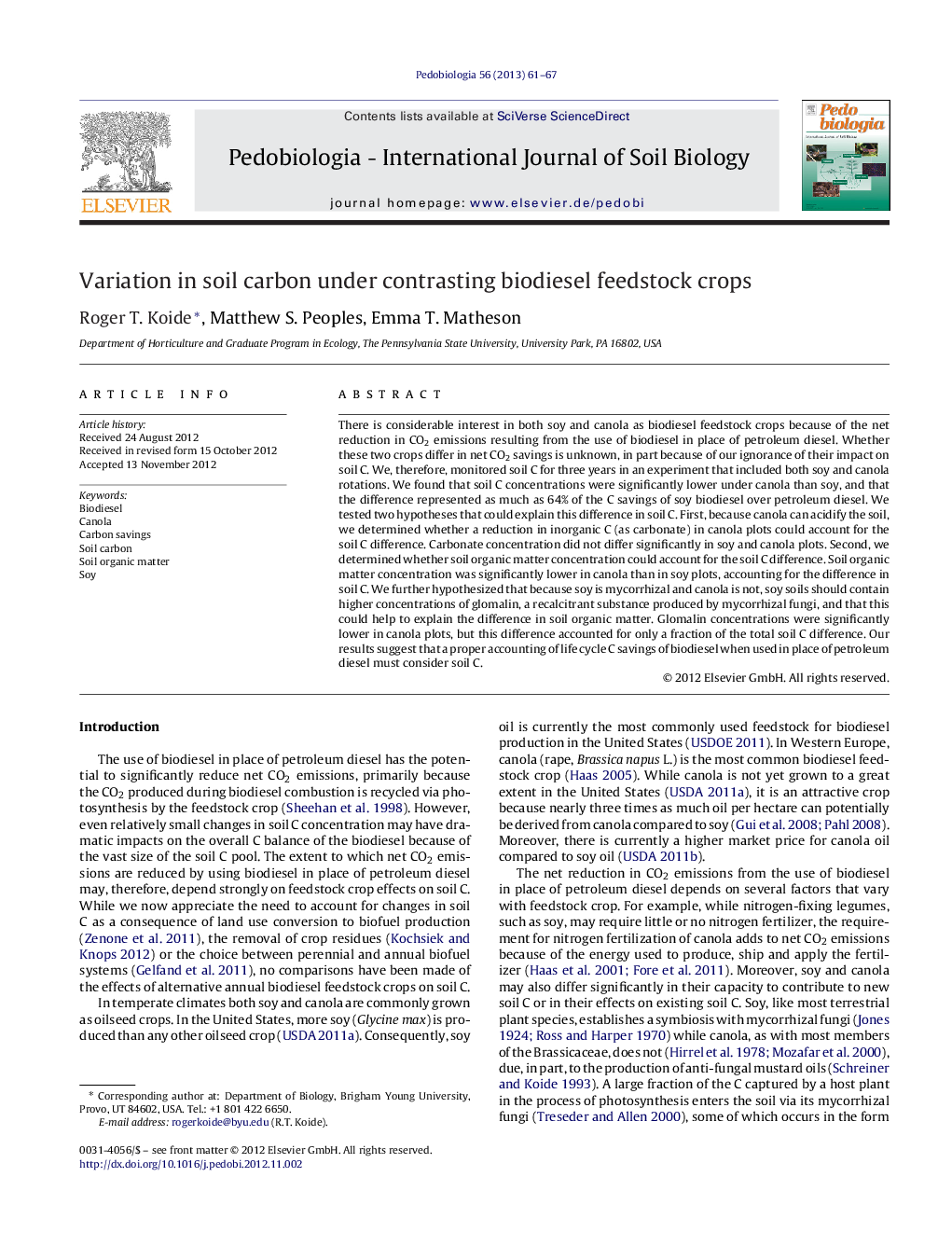| Article ID | Journal | Published Year | Pages | File Type |
|---|---|---|---|---|
| 2061110 | Pedobiologia | 2013 | 7 Pages |
There is considerable interest in both soy and canola as biodiesel feedstock crops because of the net reduction in CO2 emissions resulting from the use of biodiesel in place of petroleum diesel. Whether these two crops differ in net CO2 savings is unknown, in part because of our ignorance of their impact on soil C. We, therefore, monitored soil C for three years in an experiment that included both soy and canola rotations. We found that soil C concentrations were significantly lower under canola than soy, and that the difference represented as much as 64% of the C savings of soy biodiesel over petroleum diesel. We tested two hypotheses that could explain this difference in soil C. First, because canola can acidify the soil, we determined whether a reduction in inorganic C (as carbonate) in canola plots could account for the soil C difference. Carbonate concentration did not differ significantly in soy and canola plots. Second, we determined whether soil organic matter concentration could account for the soil C difference. Soil organic matter concentration was significantly lower in canola than in soy plots, accounting for the difference in soil C. We further hypothesized that because soy is mycorrhizal and canola is not, soy soils should contain higher concentrations of glomalin, a recalcitrant substance produced by mycorrhizal fungi, and that this could help to explain the difference in soil organic matter. Glomalin concentrations were significantly lower in canola plots, but this difference accounted for only a fraction of the total soil C difference. Our results suggest that a proper accounting of life cycle C savings of biodiesel when used in place of petroleum diesel must consider soil C.
